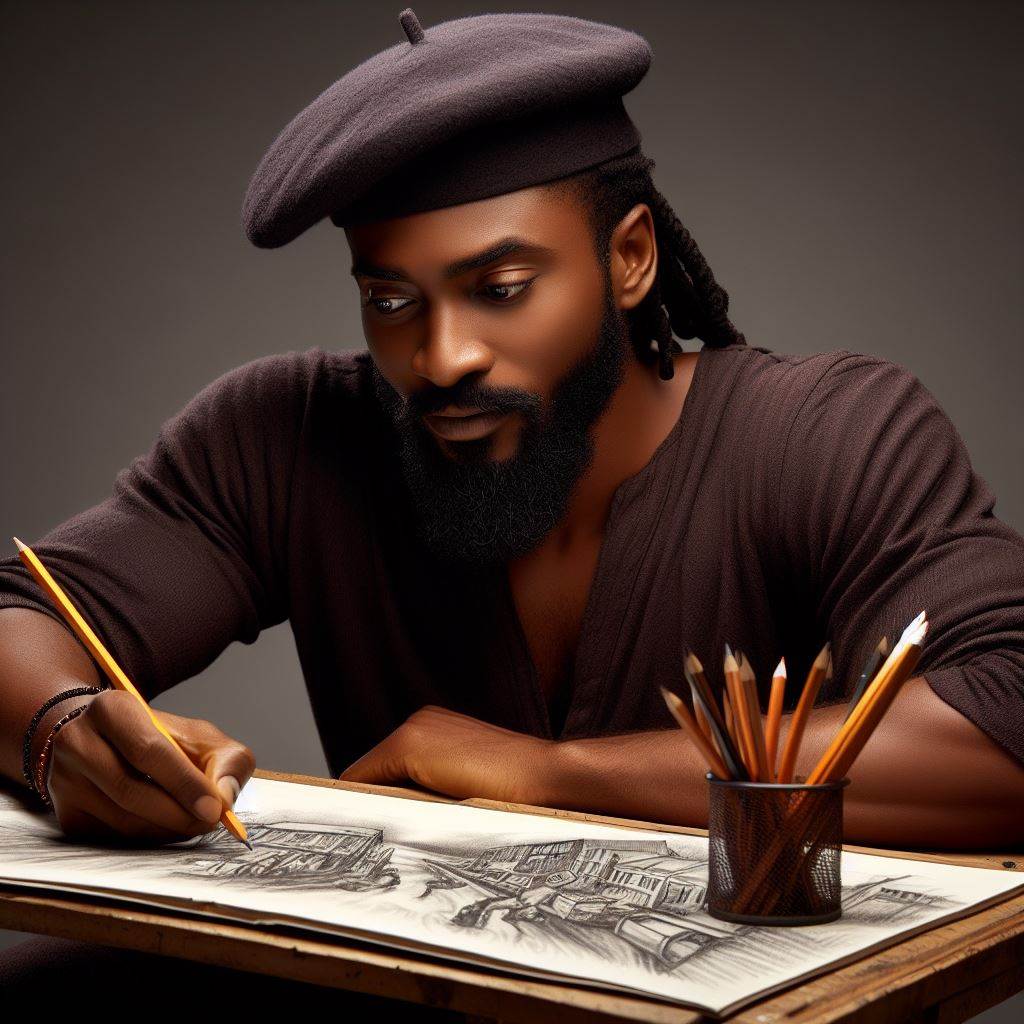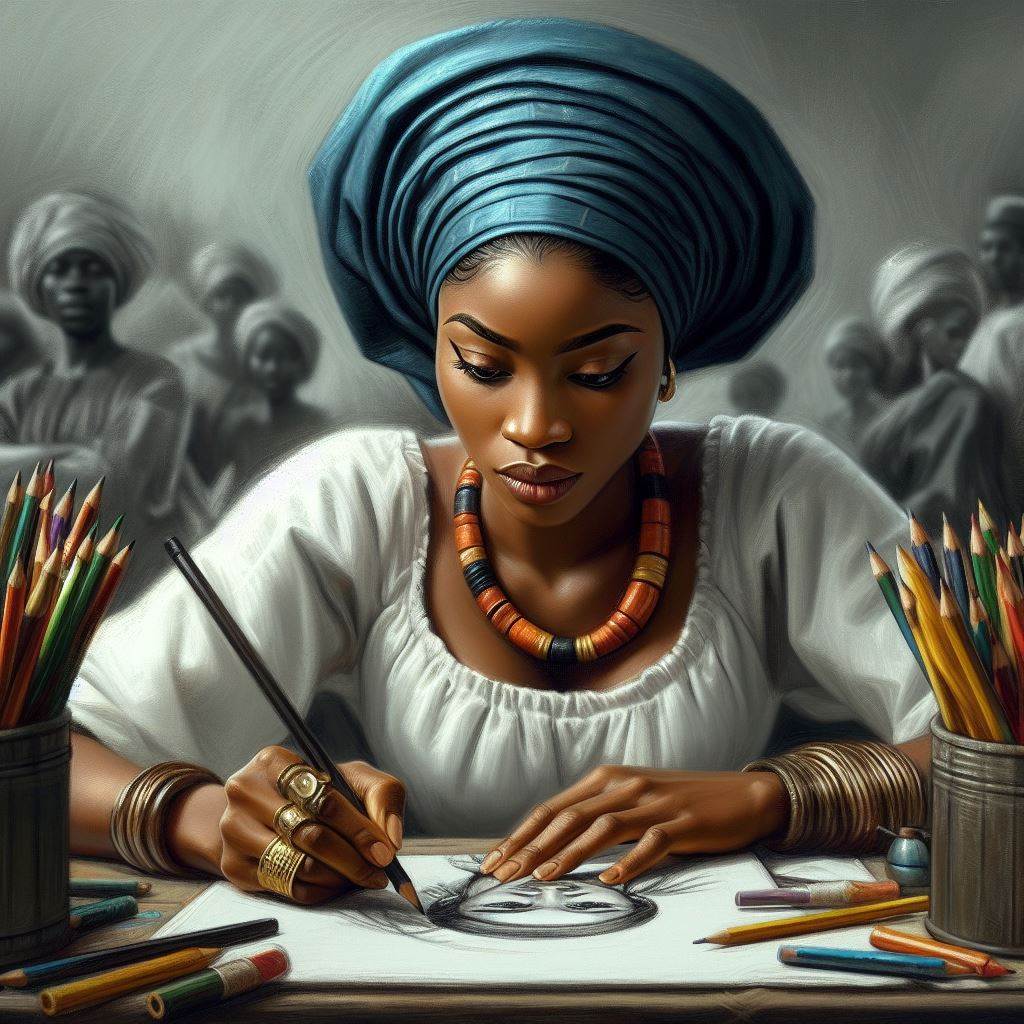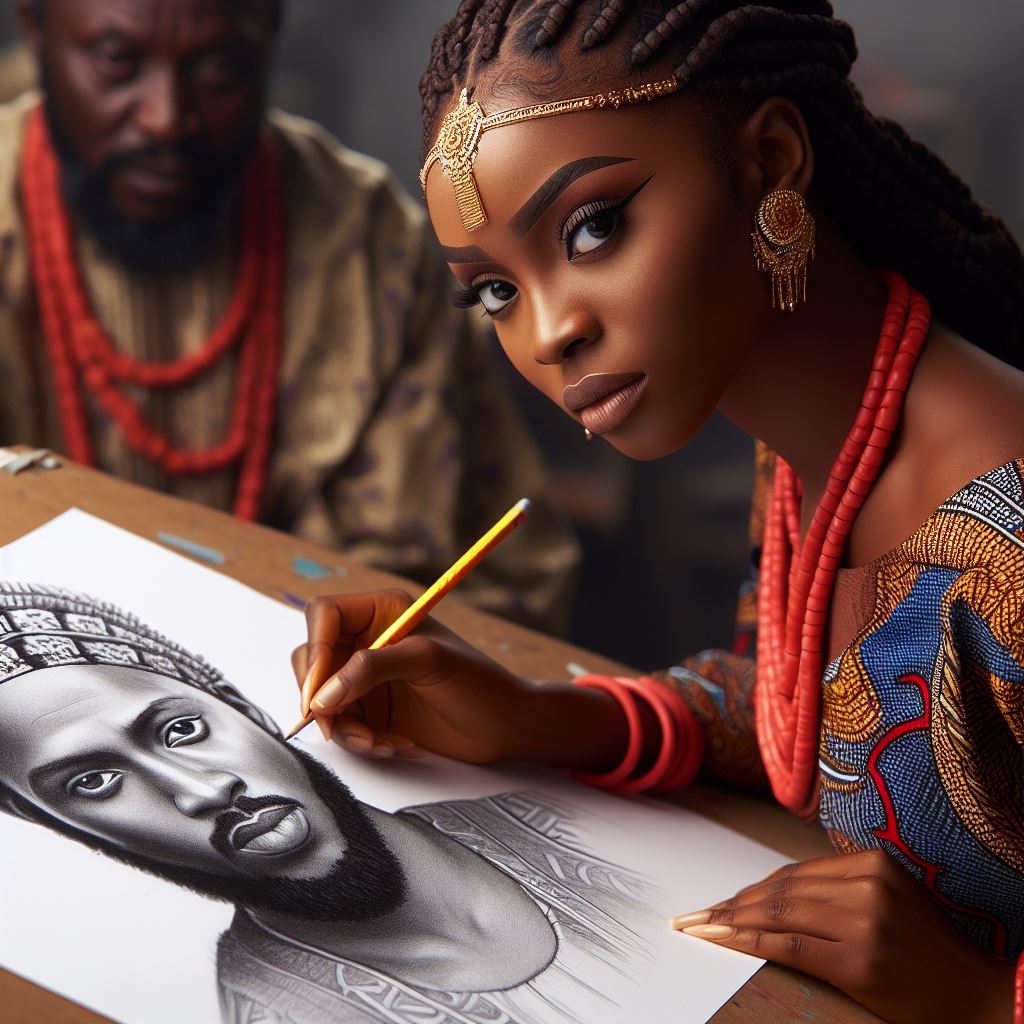Introduction
Fine art and applied art are distinct fields within the realm of creativity.
Fine art is created primarily for aesthetic appreciation.
It encompasses painting, sculpture, drawing, and other forms that emphasize artistic expression.
In contrast, applied art serves a functional purpose, often found in everyday objects like furniture, ceramics, textiles, and graphic design.
The key difference lies in their intended purposes: fine art exists for its own sake, while applied art serves practical needs.
Additionally, fine art tends to be more subjective and open to interpretation, while applied art follows specific design principles to fulfill its intended function.
Understanding these differences is crucial for artists and enthusiasts alike, as it shapes their approach to creation and appreciation.
Fine art invites contemplation and emotional response, while applied art merges form with function to enhance our daily lives.
Appreciating both forms enriches our understanding of artistic diversity and innovation in human expression.
Purpose and Functionality
Primary purpose of fine art
Fine art serves as a form of expression and communication for the artist. It is meant to evoke emotions, provoke thoughts, and challenge perceptions.
Practical applications and functions of applied art
Applied art, on the other hand, has more practical uses.
It is created with a specific function or purpose in mind, such as furniture design, fashion, or graphic design.
Influence of purpose on creation and perception
The differences in purpose between fine and applied art have a significant impact on how each type of art is created and perceived.
- Fine art is often created for the sake of art itself, focusing on aesthetic qualities and emotional expression.
- Applied art, however, is created with functionality in mind, with the goal of serving a specific purpose or meeting a practical need.
This distinction in purpose influences the materials, techniques, and styles used in each type of art.
Fine art may involve experimentation and abstract concepts, while applied art is more focused on craftsmanship and usability.
In terms of perception, fine art is often viewed through a lens of appreciation for creativity and originality.
It is valued for its uniqueness and ability to evoke complex emotions.
On the other hand, applied art is judged based on its practicality and functionality.
The purpose of fine art is to challenge the viewer and stimulate intellectual and emotional responses, while the purpose of applied art is to serve a specific function or solve a problem.
In summary, while both fine and applied art have their own unique value and significance, the primary difference lies in their purpose and functionality.
Fine art is about creativity and expression, while applied art is about utility and problem-solving.
Read: Comparing Communication Arts and Mass Communication
Techniques and Medium
The different techniques and mediums used in fine art
Fine art encompasses a rich array of techniques and mediums, each offering unique avenues for artistic expression.
Paintings, characterized by brushwork and pigment blending, convey emotion and narrative.
Sculpture, employing various materials like marble, bronze, or clay, manifests in three-dimensional forms, inviting tactile engagement.
Drawing, ranging from graphite sketches to intricate ink compositions, captures fleeting moments or intricate details with precision.
Mixed media art combines different materials and techniques, fostering innovation and experimentation.
Compare and contrast the techniques and mediums used in applied art
Contrastingly, applied art prioritizes functionality, employing techniques and mediums tailored to specific purposes.
Textile design utilizes fabric manipulation and printing techniques to create garments, upholstery, and decorative textiles.
Graphic design relies on digital software and typography to communicate information effectively through visuals.
Industrial design integrates ergonomics and materials engineering to produce practical objects such as furniture, appliances, and vehicles.
How the choice of techniques and mediums is influenced by the intended purpose of the art
The choice of techniques and mediums in both fine and applied art is heavily influenced by their intended purposes.
Fine art prioritizes self-expression and aesthetic exploration, allowing artists the freedom to experiment with unconventional methods and materials.
Applied art, on the other hand, must consider usability and practicality, requiring artists to select techniques and mediums that enhance functionality without sacrificing aesthetics.
In fine art, the emphasis is on creativity and originality, with artists often pushing the boundaries of traditional techniques and mediums to convey personal narratives or evoke emotional responses.
Experimentation with unconventional materials like found objects, recycled materials, or digital technology is common, allowing artists to challenge established norms and redefine artistic boundaries.
In contrast, applied art demands a more methodical approach, with artists selecting techniques and mediums based on their suitability for the intended function and audience.
Precision and functionality take precedence, guiding artists to utilize established methods and materials that ensure durability and usability.
The use of standardized production processes and materials is common in applied art, reflecting a focus on mass production and consumer demand.
Ultimately, while both fine and applied art employ a wide range of techniques and mediums, their divergent purposes shape the artistic process and decision-making.
Fine art celebrates creativity and individual expression, encouraging artists to experiment and innovate.
Applied art, rooted in functionality and usability, requires a more pragmatic approach, with artists selecting techniques and mediums that serve a specific purpose effectively.
Understanding these differences enriches our appreciation of the diverse forms of artistic expression and their impact on society.
Read: Language Arts Courses: What to Expect in Nigeria
Aesthetics and Design Elements
The aesthetic qualities of fine art, such as beauty, emotion, and expression
Fine art captivates with its aesthetic allure, evoking a myriad of emotions and stirring the soul.
Beauty transcends mere visual appeal, resonating deeply within the observer.
Emotion infuses each stroke, imbuing the artwork with raw, palpable sentiment.
Expression flourishes, offering a window into the artist’s innermost thoughts and feelings.
The design elements in applied art, including functionality, usability, and practicality
In contrast, applied art thrives on its design elements, meticulously crafted to serve a specific purpose.
Functionality reigns supreme, dictating the form and structure of each creation.
Usability ensures seamless integration into daily life, enhancing convenience and efficiency.
Practicality underscores every aspect, ensuring the art fulfills its intended function with precision and reliability.
How the aesthetics and design elements contribute to the overall impact of each type of art
The interplay of aesthetics and design elements defines the essence of both fine and applied art, shaping their overall impact on the observer.
In fine art, aesthetic qualities ignite the imagination, inviting viewers on a journey of introspection and wonder.
The beauty, emotion, and expression woven into each piece leave an indelible mark on the soul, transcending the confines of time and space.
Conversely, applied art’s design elements imbue it with a sense of purpose and practicality, enhancing its functionality and usability.
The seamless integration of form and function elevates the art beyond mere ornamentation, making it an indispensable part of daily life.
While fine art entrances with its aesthetic allure, applied art enriches the human experience with its seamless fusion of design and utility.
Generally, the aesthetics of fine art and the design elements of applied art each contribute uniquely to their overall impact.
While fine art captivates with its beauty, emotion, and expression, applied art impresses with its functionality, usability, and practicality.
Together, they enrich the world with their diverse forms of artistic expression, leaving an enduring legacy that transcends generations.
Read: Internship Opportunities for Communication Arts Students

You Might Also Like: Top Nigerian Universities Offering Music Programs
Delve into the Subject: Future Trends in African and Asian Studies
Cultural and Historical Significance
The cultural and historical contexts in which fine art and applied art have evolved
The cultural and historical contexts in which fine art and applied art have evolved are crucial to understanding their significance.
Fine art has been traditionally associated with high culture, aimed at providing aesthetic pleasure and intellectual stimulation.
On the other hand, applied art serves practical functions while also possessing artistic qualities.
Societal values and norms influence the creation and appreciation of art
Societal values and norms play a significant role in influencing the creation and appreciation of art.
Fine art, with its emphasis on creativity and expression, often reflects the concerns, beliefs, and emotions of a society at a particular point in time.
Applied art, on the other hand, is shaped by the functional needs and preferences of a community or culture.
Show how fine art and applied art contribute to the preservation and reflection of cultural heritage
Both fine art and applied art contribute to the preservation and reflection of cultural heritage.
Fine art serves as a repository of artistic achievements, showcasing the evolution of artistic styles and techniques over time.
Applied art, through its integration into everyday objects and structures, reflects the cultural identity and values of different societies.
Read: Digital Media Trends in Communication Arts
See Related Content: Learning Nigerian Languages: Resources and Tips
Discover More: Online Courses for English Language Students in Nigeria
Career Opportunities
The diverse career paths available in fine art, such as painter, sculptor, or photographer
When it comes to career opportunities, both fine and applied art offer a wide range of paths for individuals looking to pursue their passion for art.
Below, we will outline the diverse career paths available in each field and provide insights into the skills and qualifications required for success.
Fine Art Career Paths
- Painter: Fine artists who specialize in painting create original works of art using various mediums such as oil, watercolor, or acrylic. A strong foundation in drawing and color theory is essential for success in this field.
- Sculptor: Sculptors work with materials like clay, wood, metal, or stone to create three-dimensional artworks. Creativity, spatial awareness, and manual dexterity are key skills needed for sculptors.
- Photographer: Photographers use their artistic vision and technical skills to capture images that tell a story or evoke emotions. Understanding composition, lighting, and editing techniques is crucial for photographers.
The professional opportunities in applied art, including graphic design, industrial design, and fashion design
Individuals pursuing a career in fine art often exhibit their work in galleries, museums, or art fairs, and may also work as freelance artists or educators.
To succeed in fine art, artists need strong creativity, artistic skill, and a passion for self-expression.
Applied Art Career Paths
- Graphic Designer: Graphic designers use visual elements to communicate ideas and messages through digital or print media. Proficiency in design software, creativity, and an understanding of branding and marketing are essential for graphic designers.
- Industrial Designer: Industrial designers create products and packaging that are both functional and aesthetically pleasing. They must have a strong understanding of materials, manufacturing processes, and user experience design.
- Fashion Designer: Fashion designers create clothing, accessories, and footwear for the fashion industry. Creativity, knowledge of textiles and trends, and strong design skills are critical for success in this competitive field.
Provide insights into the skills and qualifications required for success in each field.
Professionals in applied art often work for design firms, advertising agencies, fashion houses, or corporations, and may also freelance or start their own businesses.
Success in applied art requires a combination of creativity, technical skills, and the ability to collaborate with clients and team members.
Therefore, whether you choose a career in fine art or applied art, pursuing your passion and honing your skills are key to success in the dynamic and ever-evolving world of art and design.
Find Out More: History of Music Education in Nigerian Universities
Gain More Insights: Mass Communication Ethics and Regulations Nigeria
You Might Also Like: Understanding Film Licensing Laws in Nigeria
See Related Content: Cultural Studies in African and Asian Studies Programs
Conclusion
In summary, the key differences between fine art and applied art lie in their purpose and execution.
Fine art is created primarily for aesthetic purposes, focusing on self-expression and evoking emotions, while applied art serves a functional purpose, often in commercial or practical contexts.
Fine art stands out for its unique characteristics of creativity, originality, and individual expression.
It contributes to shaping culture, reflecting societal values, and pushing boundaries of artistic innovation.
On the other hand, applied art showcases practicality, utility, and problem-solving skills, integrating art into everyday objects and environments.
As we conclude, it is essential to appreciate and acknowledge the diversity and richness of the art world.
Fine art and applied art both play vital roles in shaping our surroundings, enriching our lives, and sparking creativity.
By exploring and embracing the distinct qualities of each type of art, we can cultivate a deeper understanding and appreciation for the artistry that surrounds us.
Let us continue to support artists, artisans, and creators in their endeavors and celebrate the myriad forms of art that contribute to the beauty and complexity of our world.




